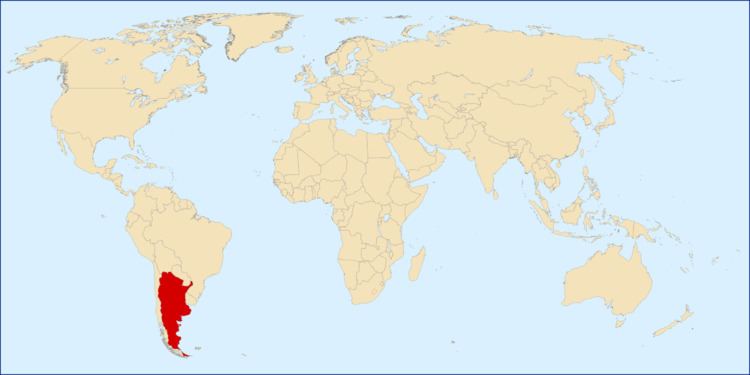 | ||
Paraguayan Argentines are Argentine citizens of full or partial Paraguayan descent or Paraguay-born people who reside in Argentina. Paraguayan people comprise an important ethnic group in the country due to the sustained immigration that gained importance in the 1970s. The number of people born in Paraguay living in Argentina has been estimated in around 325,000. Therefore, it is the largest foreign community in the country outnumbering individuals from Italy and Spain (countries which have been historically regarded as the origin of the backbone of Argentine society). It is also one of the fastest growing foreign nationalities. Despite all this, its numbers have been undercounted so it is believed that the real amount is even much higher.
Contents
History
The North-Eastern provinces of Argentina were originally inhabited by Guarani tribes conforming with what is now Paraguay and several regions of Brazil the area of influence of Guarani culture. This influence can be seen nowadays in many common cultural features. However, the earliest presence of Paraguayans as an ethnic group can be traced back much later, to the second foundation (and the real permanent settlement) of the city of Buenos Aires by Juan de Garay who sailed down Parana River from Asuncion accompanied by local Mestizo and Guarani families. In addition, there have always been certain conexions between the two countries during later periods of the Spanish rule, especially when the Viceroyalty of the Rio de la Plata was created in 1776 which included several Intendencias, among them the Intendencia of Paraguay and Intendencia of Buenos Aires.
There has been Paraguayan presence in Argentine soil during and after the Paraguayan War and after the Revolution of 1947 in Paraguay but it did not acquired importance before 1970. For many economical reasons (Paraguay being an impoverished country) and political reasons (Stroessner dictatorship), Paraguayans started to settle in larger amounts throughout the wealthier neighbouring territory. Another fact was the porosity of Argentine borders and that the population density has always been disproportionally higher in the Eastern region (Argentine-Brazilian border) rather than the Western region or Chaco (Bolivian border).
Very different from other immigrant communities in Argentina (European and Middle-Eastern), Paraguayan entrance has been large (with insignificant return rate) and constant even to these days which makes up to 40 years of sustained immigration that does not seem to stop or decline in the future.
Distribution
The distribution is not even, being Buenos Aires city and the homonymous province the top destinations for Paraguayans. 60% of the Paraguayan-born community is settled in these areas. In the North-Eastern Argentine provinces of Misiones, Corrientes, Formosa and Chaco, due to geographical links, lives more than one quarter of the community. The 10% left is spread throughout the rest of the provinces.
Traditions
Yerba Mate (scientific name "Ilex Paraguayensis")
Mate (traditional infused drink with hot water claimed by Argentina, Paraguay and Uruguay as the National drink)
Terere (traditional infused drink with cold water originally from Paraguay)
Chamame (folk music genre with its origins in Guarani Jesuit Missions mixed with European styles)
Guaraní Language (Official language of Paraguay and second official language of Corrientes province since 24 September 2004)
Corrientes
Ituzaingó Curuzú Cuatiá Caá Catí Cerro Corá Mburucuyá ("Passion flower" the National flower of Paraguay) Mocoretá Tabay ("small town") Tapebicua Tatacuá ("the hole of the fire") Yahapé Yataytí Calle Yapeyú Itatí Itá Ibaté ("tall stone") Guaviraví
Misiones
Oberá ("shiny") Caa Yarí Capiobí Caraguatay Garuhapé Garuhapé-Mi Garupá Guaraní Itacaruaré Mbopicuá ("hole of the bat") Panambí ("butterfly") Pindapoy Piray Kilómetro 18 Puerto Iguazú (Iguazú meaning "large water") Puerto Piray (Piray meaning "small fish") Tarumá
Chaco
Samuhú ("Chorisia" a kind of subtropical tree)
Formosa
Pirané ("smelly fish")
Entre Ríos
Gualeguay Mandisoví Villaguay Ubajay
Rivers
Paraná Paraguay ("colorful water") Uruguay ("water of the birds") Gualeguay Gualeguaychú Guayquiraró Río Paraná Ibicuy
